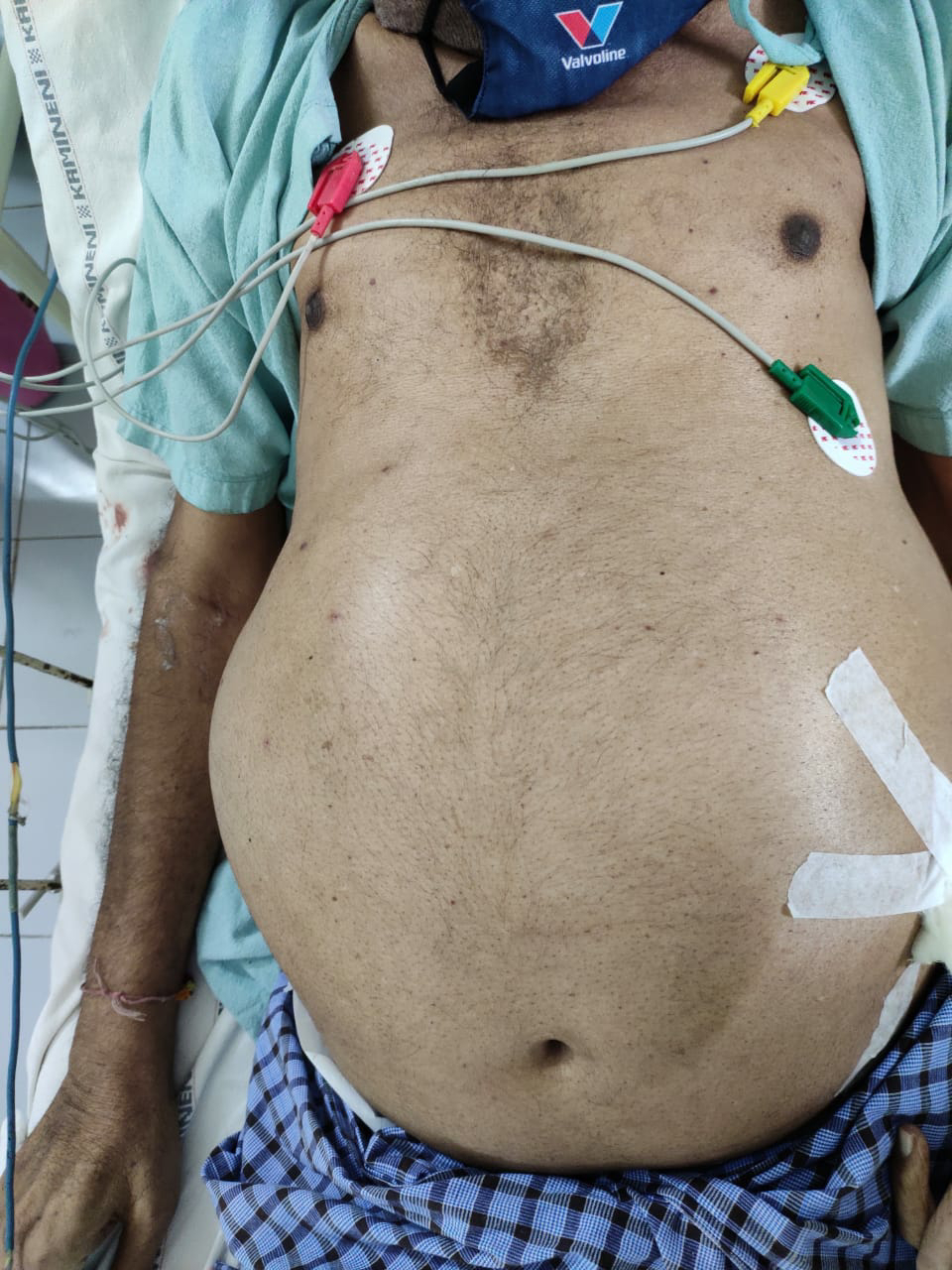HEART FAILURE IN 35 YEAR OLD MALE
Hello everyone...... I am a 4th year MBBS student and I have been given this case to solve in order to develop my competency in reading and comprehending clinical data and come up with a diagnosis.



The detailed history of the patient is in the following link:
https://madhur116.blogspot.com/2020/05/on-1452020.html?m=1
PROBLEMS OF THE PATIENT IN ORDER OF PRIORITY:
- Shortness of breath since 2 weeks.
- Bilateral Pedal edema since 2 weeks.
- Generalized weakness since 2 weeks.
Dyspnea was initially NYHA class 3(marked limitation in activity due to symptoms even during less than ordinary activity),now with treatment class 2(ordinary physical activity causes undue fatigue,dyspnea).
There is also history of paroxysmal nocturnal dyspnea since 2 weeks.
- History of fever 1 month back(high grade with chills)
KEY EXAMINATION FINDINGS:
- Bilateral edema upto the knees.
- CVS:S1,S2 heard
- RS:right ISA early inspiratory crepts+
- P/A:soft and non tender
USG abdomen:right moderate pleural effusion,grade 1 fatty liver,mild ascites.
2D ECHO:ejection fraction-27%,IVC dilated(2.3 cm)not collapsing,mild TR+,SEVERE MR+,dilated all chambers,global hypokinesia,severe LV DYSFUNCTION,mild PAHT,no MS/AS,no PE/LV clot.
ANATOMICAL LOCALIZATION OF SITE OF LESION:
Shortness of breath or "dyspnea is a subjective experience of breathing discomfort that consists of qualitatively distinct sensations that vary in intensity"
CAUSES OF DYSPNEA:
CARDIAC:
- Congestive cardiac failure
- Coronary artery disease
- Cardiomyopathy
- Valvular dysfunction
- Arrythmias
PULMONARY:
- COPD
- Asthma
- Restrictive lung diseases
- Pneuothorax
CARDIAC+PULMONARY:
- COPD with pulmonary hypertension and cor pulmonale
- Chronic pulmonary emboli
OTHER CAUSES:
- Metabolic acidosis
- Anemia
- Thyroid disease

FEATURES IN FAVOR OF CARDIAC CAUSE OF DYSPNEA:
- Dyspnea
- Paroxysmal nocturnal dyspnea
- Bilateral edema upto knees
Paroxysmal nocturnal dyspnea:Acute episodes of severe shortness of breath that generally occur at night and awaken the patient from sleep,usually 1-3 hours of sleep.
PND may also manifest as coughing or wheezing due to increased pressure in bronchial arteries leading to airway compression along with interstitial pulmonary edema that leads to increased airway resistance.
Orthopnea may be relieved by sitting upright but patients of PND often have persistent coughing and wheezing.

Echo findings of the patient suggest Heart failure with reduced ejection fraction.

HEART FAILURE WITH REDUCED EJECTION FRACTION:
It can also be said as "heart failure due to left ventricular systolic dysfunction" or "systolic failure".
CAUSES OF SYSTOLIC DYSFUNCTION:
- Myocardial infarction:Chronic ischemia reduces the heart's ability to contract and the less blood which the heart is pumping further reduces blood flow through coronary arteries.Thus heart failure makes ischemia worse which inturn makes heart failure worse.
- Dilated cardiomyopathy:Idiopathic,viral myocarditis,autoimmune causes,endocrine nad peripartum causes.drugs(antimalarials,doxorubicin,daunorubicin,antiarrythmics etc.).
- Drugs that may cause or exacerbate heart failure:
- Chronic volume overload:regurgitant valvular disease.
- Chronic brady or tachyarrythmias.
- Chronic lung disease:pulmonary vascular disorders,cor pulmonale.
- SECONDARY TO VIRAL MYOCARDITIS:
Viral infections causes myocardial inflammation and injury which decreases the myocardial contractility.This may cause dilated cardiomyopathy/dysarryhthmias resulting in heart failure.
Some viruses which can cause myocarditis:enteroviruse,coxsackie,EBV,HIVadenovirus and influenza.
- REGURGITANT VALVULAR DISEASE:
Is the mitral regurgitation in this patient secondary to left ventricualar dysfunction?
Due to left ventricular dilatation there is stretching of mitral valve annulus and displacement of papillary muscles.
Since papillary muscles,chordae and valve leaflets are usually silent bystanders(i.e.,normal) in tihis case it is also called functional MR.
Or is it the regurgutant valvular disease that is causing heart failure??
Due to chronic volume overload,there is eccentric hypertrophy of left ventricle in order to maintain the cardiac output.Grdaual weakening of the left ventricle results in systolic failure.
- ANTIMALARIAL DRUGS CAUSING CARDIOMYOPATHY??
FURTHER INVESTIGATIONS:
- BNP/NT-pro BNP:The high negative predictive value of BNP tests is helpful in ruling out heart failure.
Acute heart failure:BNP-100pg/ml;NT-pro BNP-300pg/ml
Chronic heart failure:BNP>35pg/ml;NT-pro BNP>125pg/ml
SUGGESTED TREATMENT:
- NON PHARMACOLOGIC:Fluid restriction to 2l/day and salt restriction to 2-3 g/day.
- PHARMACOLOGIC:
- FOR SYMPTOMATIC BENEFIT:diuretics,vasodilators and inotropes.
- MORTALITY REDUCING DRUGS:beta-blockers,ACE inhibitors/ARB's/ARNI,hydralazine+nitrate.
Diuretics:improve congestive symptoms,slows ventricular remodelling and decreases left ventricular filling pressure.Furosemide is the drug of choice.
Braking phenomenon and cardiorenal syndrome are the problems with diuretics.
ARNI:ARB(valsartan)+NEPRILYSIN INHIBITOR(sacubitril).
My references:
Hutchison's clinical methods.
Marrow notes.

Comments
Post a Comment